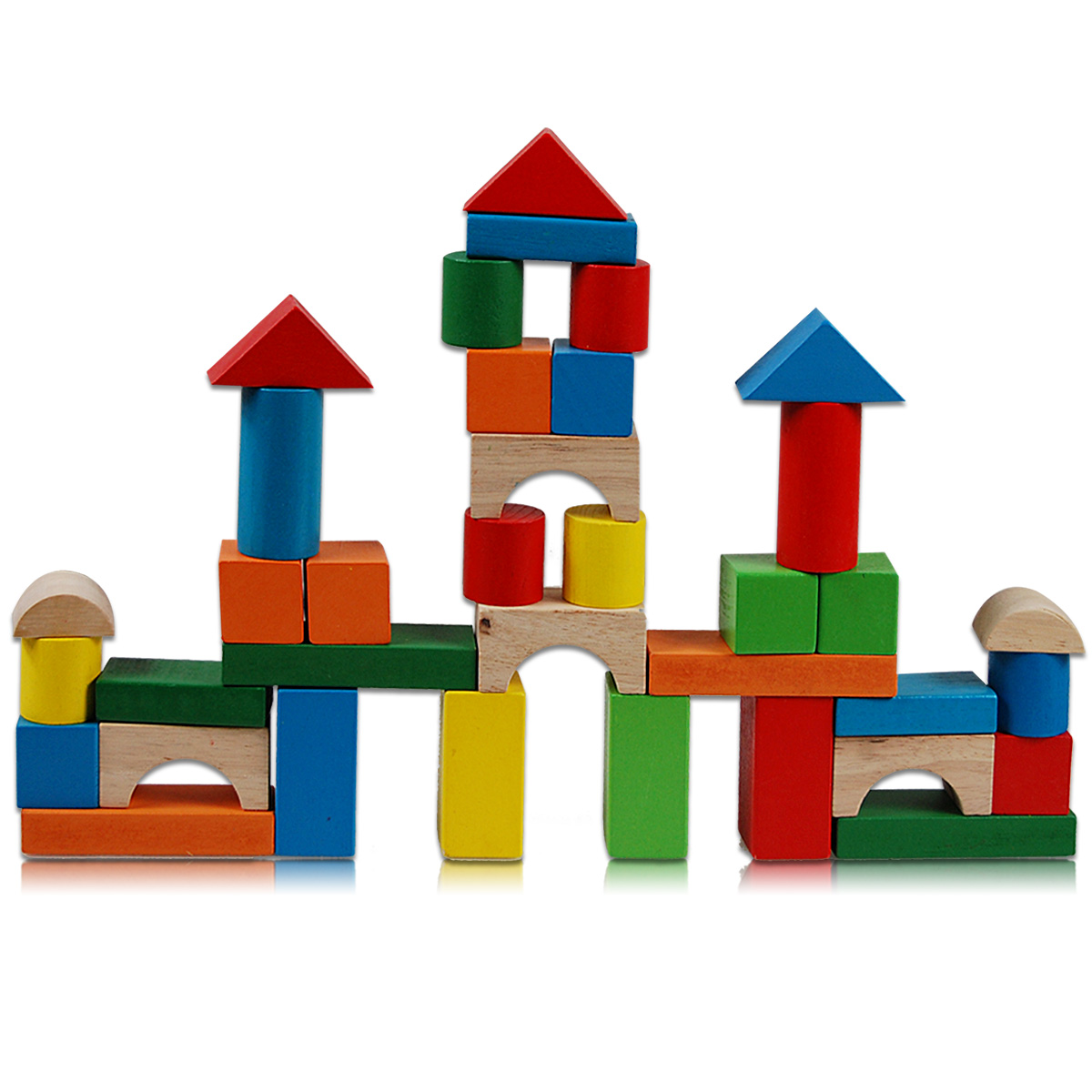

When working with other children, block play offers opportunities to practice cooperation, problem-solving, turn-taking, sharing, and self-advocacy.

Young children can also practice basic counting and learn one-to-one correspondence, which means making the connection between the number word (“one”) and the quantity (1). Pattern recognition, symmetry, fractions, and linear measurement- all elements of math-are an intrinsic part of block play.

Stacking blocks on top of one another and fine-tuning a wobbly tower require both fine motor skills and precise hand-eye coordination. Fine motor and hand-eye coordination practice You might not naturally associate block play with speech and language development, but block play actually promotes a lot of oral self-expression, particularly in telling stories about what they’ve built. When they play with blocks, children get a chance to problem-solve, troubleshoot, and test hypotheses about structure, gravity, and elevation. Here are some of the many benefits of block play Discover engineering and science fundamentals Why are blocks so foundational to childhood? The benefits of block play are enormous, and engage a ton of skills. A good block set shouldn’t come with forced lessons-its designers need to understand what makes blocks fundamentally engaging and provide fresh opportunities for creativity. Innovation in block design isn’t about shoehorning lessons into them, it’s about harnessing kids’ imaginations alongside natural creativity. Kids approach blocks in both common ways (stacking, building, toppling) and more unique ones: watch five kids play with blocks, and you’ll likely see five different approaches. The fact that young children, not yet reading, would ignore the letters on the blocks should come as no surprise-kids want to play!īlocks don’t need anything academic “snuck in.” They already offer so much without attempts to dress them up. But young children usually ignored the letters and piled the blocks” (Hirsh, p. Johnson relates a story that probably sounds familiar: “Toy makers have put blocks on the market for many long years, decorating them with letters of the alphabet in an attempt to sneak something ‘useful’ into a child’s play. In her introduction to The Block Book, Harriet M. Blocks, though deceptively simple, are perhaps the most versatile toy ever conceived. Research confirms what kids, parents, and teachers have known for centuries: playing with building blocks is not only fun, it’s also really, really good for you. And tomorrow, it will be different story! And so, it soon becomes a book of memories with hundreds of stories.Very few toys, even in their simplest form, offer the same advantages blocks do, from emotional growth and resilience, to art and visual-spatial practice, to the more obvious engineering aspects. They build, they change outfits, they become the heroes of their own stories. And why wouldn't they? They get to build their own house, next week it might be a tower, then a spaceship, a castle and anything else they like, for THEMSELVES! Once children are set with an idea of what they want to achieve they are completely lost in bringing their imagined story to the life. Now we have sold over 7 Million Blocks worldwide and have wonderful stories to share! Every time I see a child play with GIGI Bloks for the first time my eyes light up. They are strong enough to withstand play and light enough to be safe for children. I spent months researching materials and studying how children play and developed an INNOVATIVE interlocking system that would allow little architects to safely create awesome skyscrapers! The blocks are easy to handle and easy to connect. And so, the idea for GIGI Bloks was born… Whilst there were plenty of small blocks on the market, there was nothing big enough, that was affordable, to build the life-sized adventures I wanted her to have. I'd play "the floor is lava" where I couldn't step on certain parts of the floor or else I'd fall into the lava. I'd build secret little forts out of pillows and blankets and hide under them. I'd play house and serve tea to my dolls and stuffed animals. I asked myself, "What did I have the MOST fun doing as a kid?" And almost all my memories were of specific situations where I would play for hours using my imagination. I created GIGI Bloks because I felt there was something missing from my daughter’s playtime.


 0 kommentar(er)
0 kommentar(er)
